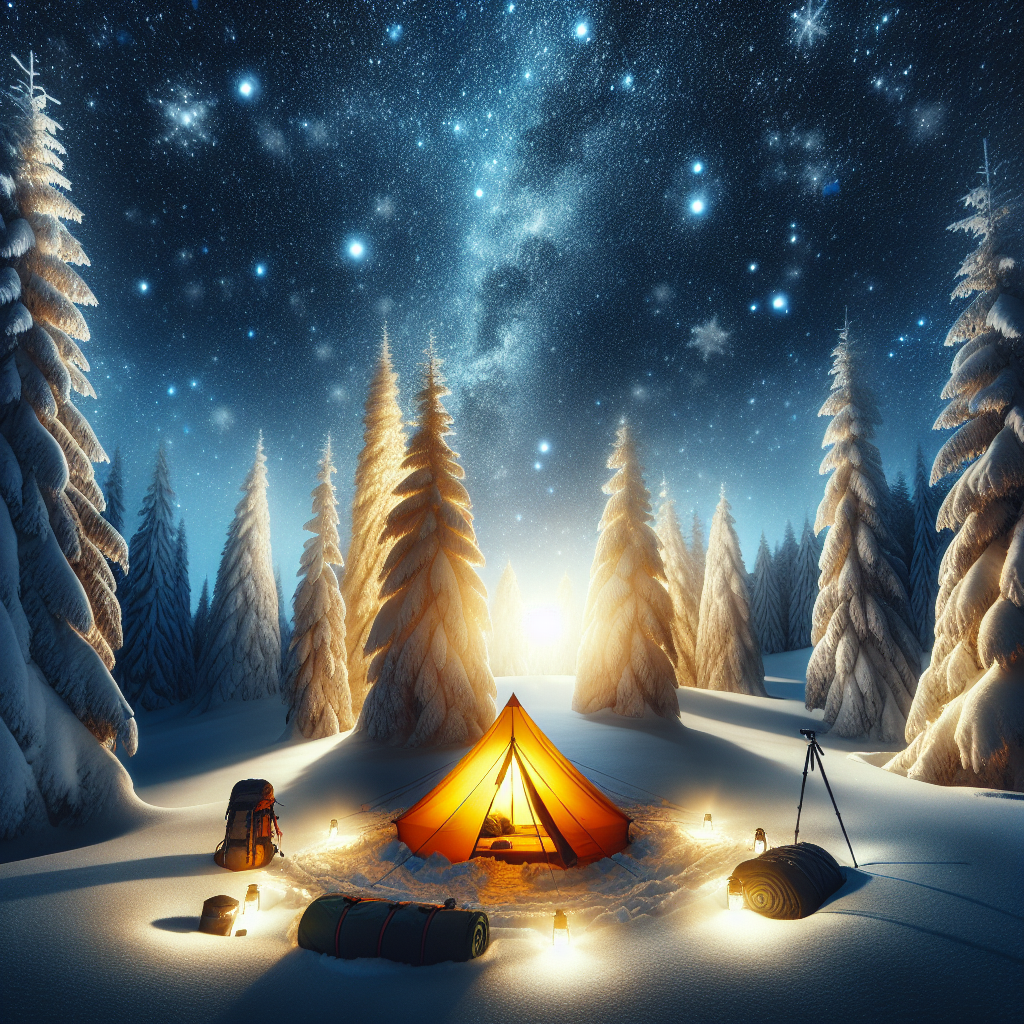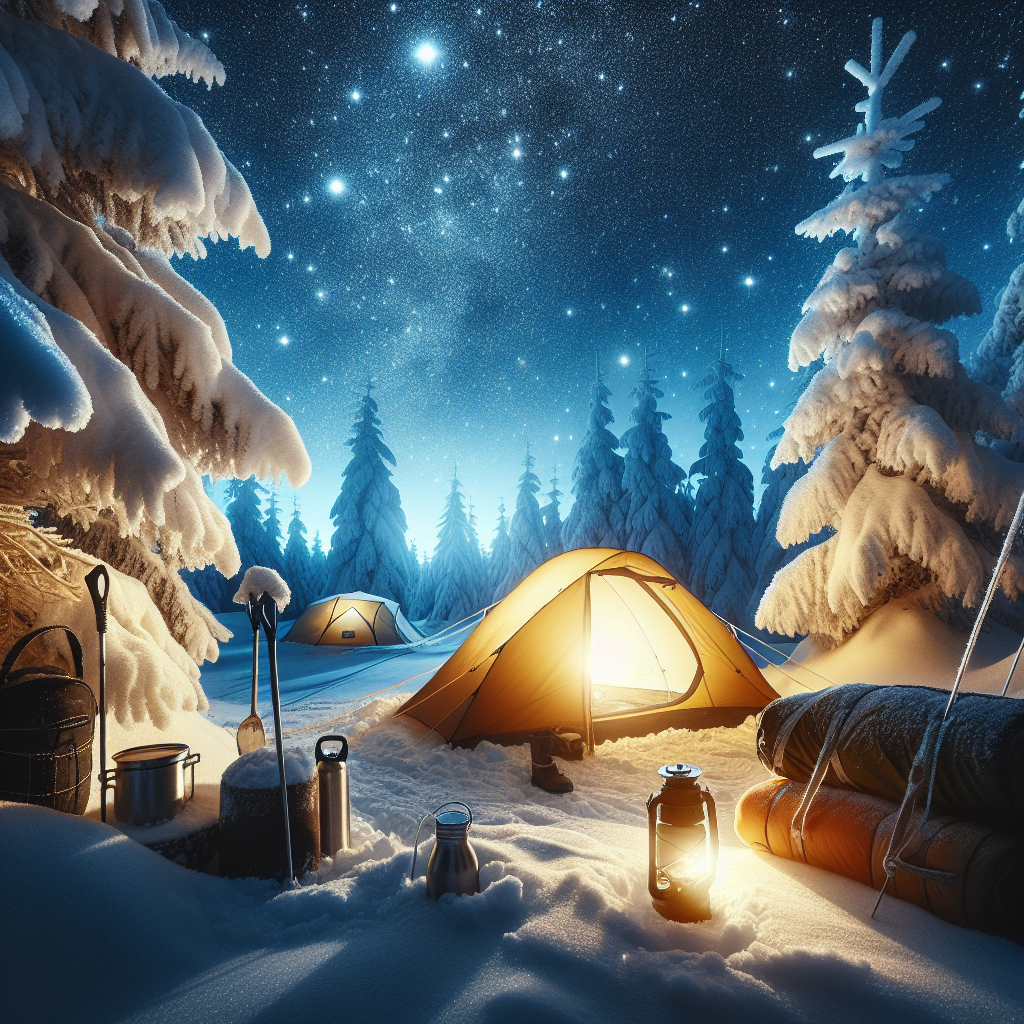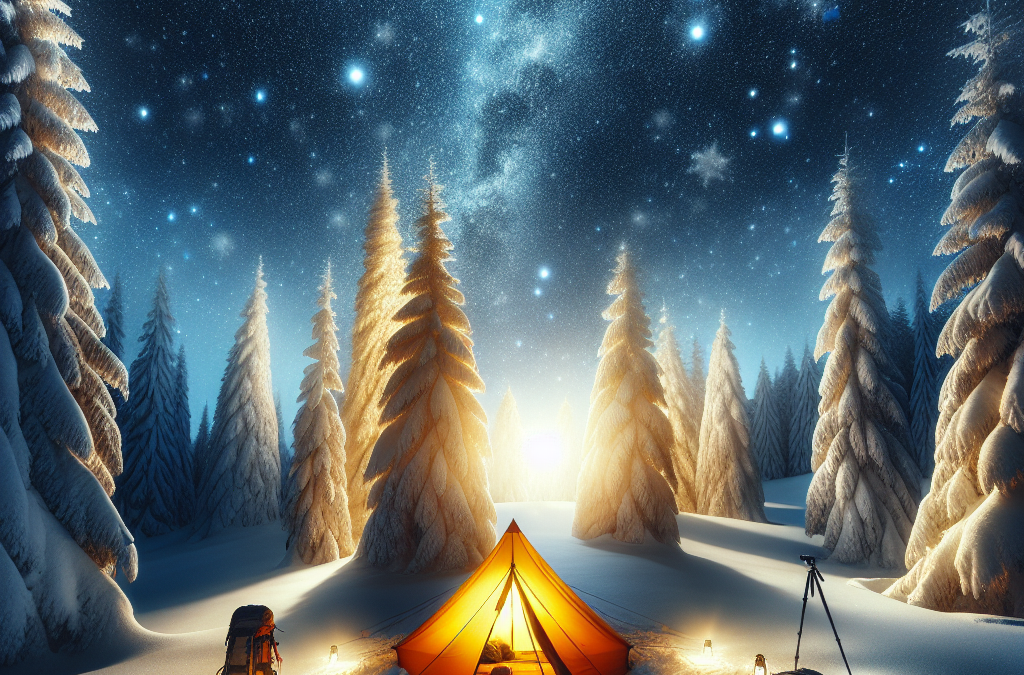Imagine snow-capped mountains as your backdrop, a light dusting of sparkling frost on your tent, the crunching sound under your boots with each step, and the soothing warmth of a campfire in the chilling winter breeze. This is the beauty of winter camping, but despite its allure, it doesn’t come without its challenges. Your safety, warmth, and overall comfort are of paramount importance when sleeping under the frozen stars. In this informative guide, “Winter Camping: Staying Warm and Safe in the Cold,” you’ll find essential tips and strategies aimed at keeping you snug, cosy and most importantly, safe during your winter camping adventures.

Understanding Winter Camping Risks
Winter camping is a thrilling adventure, but it also carries its own set of unique risks. Foremost among these are the cold, the snow, and being in isolated locations. Here are some potential risks associated with winter camping:
Hypothermia
Hypothermia occurs when your body loses heat faster than it can produce it. This can be a serious risk during winter camping if you’re not adequately prepared. Symptoms include shivering, confusion, fatigue, and drowsiness. If you start to feel exceptionally cold and can’t seem to warm up, you might be experiencing hypothermia.
Frostbite
Frostbite is another winter hazard that results from the freezing of skin and its underlying tissues. It commonly affects the fingers, toes, nose, ears, cheeks, and chin. Discoloration of the skin, numbness, and a cold, prickly feeling are among the symptoms. Always make sure to bundle up and cover as much skin as possible to prevent it.
Dehydration
Even in winter, dehydration is a significant risk. It might not seem like it because you’re in a colder environment, but your body is losing a lot of moisture through breathing and perspiration. Always drink plenty of water and don’t wait until you’re thirsty.
Snow Blindness
Snow blindness is a temporary loss of vision due to overexposure to the sun’s UV rays reflected from the snow. It’s essentially a sunburn on your eyes. Symptoms include pain or discomfort in the eyes, sensitivity to light, and decreased vision. To prevent snow blindness, always pack and wear a pair of UV-protected sunglasses or goggles.
Avalanche Risk
Camping in certain mountainous areas can present the risk of avalanches. It’s essential to research and understand the terrain before setting up camp. If in doubt, avoid slopes and any area under active avalanche paths.
Choosing the Right Winter Camping Gear
Having the right gear can make all the difference in your winter camping experience. Here’s a list of essentials that you shouldn’t forget:
Four-Season Tent
You can find shelter in a sturdy, four-season tent designed to withstand wind and heavy snow. They generally have stronger poles and less mesh than their three-season counterparts, helping to retain heat and protect from the elements.
Sleeping Bag and Pad
Winter camping demands a high-quality, insulating sleeping bag, rated at or below the expected lowest temperature. A sleeping pad is just as crucial for insulation between you and the cold ground.
Snow Safe Stove and Cookware
A reliable stove is necessary for heating water, cooking meals, and can contribute to warming your tent. Ensure it’s suitable for cold snowy conditions. Also, have a pot to melt snow for drinking water or cooking.
Clothing Layers
Having the right clothes to face winter conditions is a game-changer. Remember to layer up to maintain body heat and stay dry. This usually involves a base layer to manage moisture, a mid-layer for insulation, and an outer layer to shield you from the weather.
Pre-Camping Planning and Preparations
Before heading out, you’ll need to prepare sufficiently for the conditions to ensure a safe and comfortable camping trip:
Understanding Snow Conditions
Understand the type and condition of the snow where you’re heading. Fresh powder, wet snow, and icy crusts all behave differently.
Researching Campsite and Route
Research your campsite and route in advance. Always aim to be aware of potential hazards such as avalanche paths or areas prone to high wind.
Check Weather Forecast Regularly
The weather can change rapidly in the winter, and it’s crucial to check the forecast regularly before your trip to avoid getting caught in severe conditions.
Inform Someone about Camping Plans
Always inform a friend or family member about your winter camping plans, including your route, anticipated return time, and emergency contact details.
Setting Up Camp Safely in Winter Conditions
Once you reach your winter wonderland, the next step is to set up a safe and comfortable camp:
Choosing a Campsite
Choosing a suitable campsite is vital. Look for flat areas that are shielded from the wind.
Setting up Your Tent
After choosing your site, set up your tent. Clear away any snow and make sure to secure it firmly into the ground to prevent it from getting blown away.
Melting Snow for Drinking Water
As water sources may be frozen, you’ll often need to melt snow for drinking water. Make sure to use fresh snow and bring it to a boil to kill any potential bacteria.
Creating a Kitchen Area
A separate kitchen area is a good idea for safety and comfort. It should be downwind but a suitable distance from your tent to avoid any accidents or spills.

Staying Warm during Winter Camping
While camping in cold conditions, maintaining body temperature is crucial:
Use of Hand and Foot Warmers
Hand and foot warmers can be helpful to combat the cold. Just ensure they’re safe for sleeping environments.
Importance of Insulation
Insulation is critical in keeping warm. Your sleeping bag and pad are the first line of defense, followed by your choice of clothing.
Right Selection of Clothing Layers
Choosing the right types of layers can make a significant difference in staying warm. It’s not just about wearing more layers, but also choosing appropriate, moisture-wicking materials.
Eating Hot Foods and Staying Hydrated
Hot foods can help keep your body warm from within. Staying hydrated is equally important.
Avoiding Frostbite and Hypothermia
It’s essential to understand how to avoid frostbite and hypothermia while winter camping:
Recognizing the Signs
Knowing the signs of frostbite and hypothermia is crucial for prevention. They include numbness, excessive shivering, loss of coordination, confusion, and discolored skin.
Proper Clothing
Wearing suitable clothing helps safeguard against these conditions. Ensure you cover all parts of your body, especially the hands, feet, and face.
Importance of Staying Dry
Staying dry is crucial. Wet clothes and skin significantly increase the risk of hypothermia and frostbite.
Ways to Warm Up Quickly
knowing methods to warm up quickly can also be lifesaving. Use hand warmers, consume warm drinks and foods, and exercise to generate heat.
Winter Camping Food and Nutrition
Your body will burn more calories in cold conditions, and it’s essential to adjust your food and nutrition accordingly:
High Calorie Food Choices
High-calorie foods are your best friend when camping in the cold. They offer the energy your body needs to stay warm and active.
Hydrate Frequently
Hydrating frequently is vital, even if you may not feel as thirsty in the cold.
Keeping Food from Freezing
Keep your food from freezing by storing it in insulated containers or close to your body for warmth.
Planning Meals in Advance
Planning meals in advance will ensure you have all the nutrients you need. This also helps while packing your camping gear, as you would know exactly what food items to bring.
Winter Camping Skills and Techniques
Winter camping needs specific skills and techniques to make your experience safe and enjoyable:
Snow Shoveling Techniques
Good snow shoveling techniques are essential for camp setup, creating paths, and in emergency situations.
Necessary Knots for Winter Camping
Know the necessary knots for securing your tent, tying gear, and potentially, safety lines.
Using a Map and Compass in Snow
Navigating in the snow can be challenging. Always carry a map and compass, and know how to use them.
Signaling for Help in Snow
Understand essential signaling techniques to get help in emergencies. An emergency whistle, mirrors, and bright clothing are some things that can be used for signaling.
Winter Camping with Pets
If you’re bringing your furry friend along, there are a few added considerations:
Precautions When Bringing Pets
Dogs and cats can also be at risk of hypothermia and frostbite. Ensure they have protective gear and check their paws and skin for signs of cold injuries.
Pet-friendly Gear
Invest in pet-friendly gear like blankets, jackets, booties, and even tents to ensure their comfort and safety.
Signs of Hypothermia in Pets
Just like with humans, animals can also suffer from hypothermia. Unusual shivering, lethargy, and pale or grey gums are signs to watch for.
Restrictions and Regulations
Before taking your pet on a winter camping trip, be sure to check out the rules and regulations of the site. Some places may have restrictions on bringing pets.
Packing up and Leaving No Trace
When you’re wrapping up your camping trip, it’s important to clean up and leave no trace:
Proper Disposal of Waste
Dispose of waste correctly, including human and pet waste, as well as any trash or litter.
Packing Up the Campsite
Packing up involves clearing your site and ensuring personal items or garbage have not been left behind.
Snow Clean Up
Also, fill in any holes or depressions in the snow that you’ve made to leave the site as undisturbed as possible.
Plant and Wildlife Considerations
Respect the local wildlife and avoid damaging plants or disturbing animals. Remember, this is their home, and we are just visitors.
In conclusion, winter camping can be an exciting and memorable adventure if you know what to expect and are well-prepared. Remember, the key to a successful winter camping trip is preparation and caution. Stay warm, stay safe, and enjoy the beauty of the winter wilderness!

